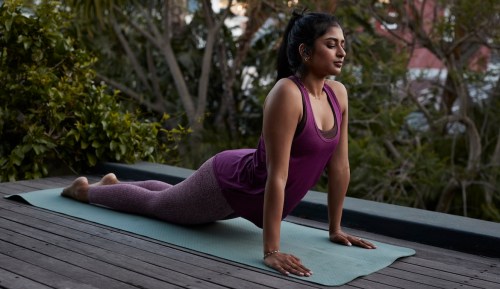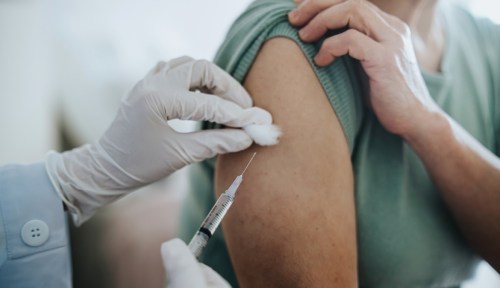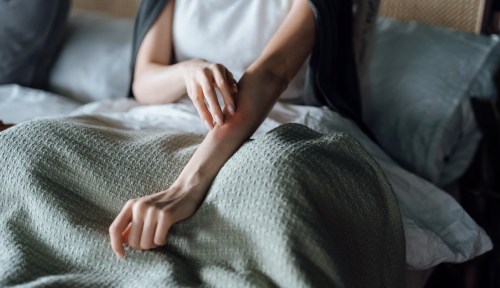‘I’m an OB/GYN—Here’s the First Thing I Do When Cramps Are About To Hit’
What does a board-certified OBGYN recommend to fight the cramps? Over-the-counter pain reliever and period-friendly yoga.

Period cramps are The Worst. They can pop up in so many places—your stomach, your labia, your back, your boobs, your butthole (just being honest!)—and take a while to go away. I don’t know about you, but it’s hard for me to enjoy even the most fun times when cramps come along.
Experts in This Article
board-certified OB/GYN with The EpiCentre of Charleston and medical advisor for Natalist and Everlywell
Around 80 percent of women (plus trans men and nonbinary people) experience period pain at some point. Several options for pain relief exist, thank goodness, from ibuprofen to heating pads and more. But what does an OB-GYN recommend starting with?
“My number one must-have for period cramps is an over-the-counter pain reliever,” says Kenosha Gleaton, MD, an OB-GYN and Natalist’s medical advisor. “My goal is to take it prior to the actual start of my cycle and continue taking it every six hours until 24 hours past the start of my cycle.”
Taking medication preemptively—about one day before the pain starts—can help stop cramps before they come. Dr. Gleaton explains once the uterine line starts shedding, prostaglandins (aka fat compounds with hormone-like effects) are released, which causes inflammation and a narrowing of the blood vessels. “If anti-inflammatories, such as ibuprofen, are taken before the uterine lining begins to shed, they counteract the prostaglandins and help prevent the pain cascade from starting,” she says.
While there isn’t much research saying which pain reliever is most effective, NSAIDs (such as Advil, Motrin, and Aleve) may work better than acetaminophen (aka Tylenol). So it’s probably best to go with what you have in the cabinet that works for you. And, of course, check with your provider before taking any medications regularly.
It’s also okay to do different things for relief, especially given periods can come with several side effects. For Dr. Gleaton, exercise is something that addresses multiple PMS symptoms. “I’ve also found that exercise—any cardio with high cardiac output—seems to decrease bloating and mobilize extra fluid from my mid-section,” she shares. “In addition, the serotonin release and endorphins decrease my PMS-related moodiness and give an immediate energy boost to combat excessive fatigue.”
Both medication and exercise work pretty quickly, she says. “When taken promptly, an over-the-counter pain reliever works within five to 10 minutes. Exercise also yields pretty immediate relief once the heart rate is elevated sufficiently.”
As far as exercise goes, if you don’t have it in you to go super hard. Light walking, yoga, Pilates, and low-volume strength training are also solid options that’ll do the trick. Research backs this up: In 2019, a couple of review authors looked at studies that measured the helpfulness of exercise for cramps, and they found both low-intensity and high-intensity exercises were effective.
If you’re feeling yoga, stick to period-friendly stretching positions such as cat-cow pose, head-to-knee pose, child’s pose, and supine twist. Since they keep you upright, they won’t add pressure or mess with your flow.
While having cramps on your period can feel almost certain as taxes, pain relief medications and exercise (plus some chocolate and your bed) can help. If the pain is severe or comes with excessive bleeding or a fever, though, it’s best to see your doctor.
Oh hi! You look like someone who loves free workouts, discounts for cutting-edge wellness brands, and exclusive Well+Good content. Sign up for Well+, our online community of wellness insiders, and unlock your rewards instantly.
Sign Up for Our Daily Newsletter
Get all the latest in wellness, trends, food, fitness, beauty, and more delivered right to your inbox.
Got it, you've been added to our email list.










